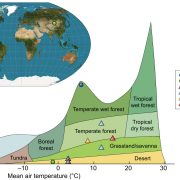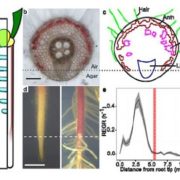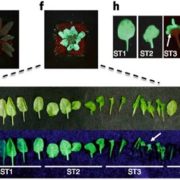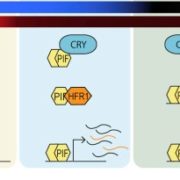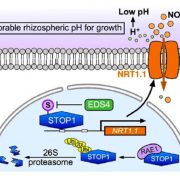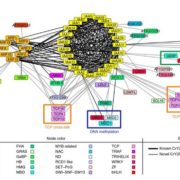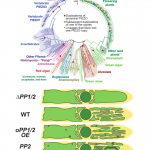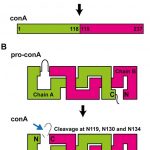Review: Alternative splicing as conserved mechanism to regulate CDPKs? ($) (TIPS)
 Calcium-dependent protein kinases (CDPKs/CPKs) are an interesting class of proteins present in plants, algae and some protists that are thought to “sense” and “respond” to spikes in intracellular Ca2+ signaling events. While multiple mechanisms have been proposed to be involved in the regulation of CDPKs, Loranger and colleagues discuss the merits of alternative splicing (AS) as a conserved factor in regulating CDPKs. Though alternative splicing was known to increase diversity of protein isoforms, it is now established to function in specific plant stress responses. In this context, the authors focus on some recent works that show treatment of plants with defense-related peptides to result in expression of alternatively spliced forms of CPK28, a protein that works at the intersection of pathogen defense and flowering transition. Through analysis of publicly available transcriptome and protein sequence data of CDPK families across angiosperms, the authors find alternatively spliced forms of CDPKs to be prevalently expressed. Notably, the truncations are seen in the CaM-like domain (CaMD) region that binds to Ca2+ ions and is thought to serve as the “sensor” domain. The authors thus propose that alternative splicing can be a “broadly-used regulatory mechanism” in plants to express CaMD-truncated isoforms of CDPKs in response to pathogen attack. Though the functional relevance of such a regulatory mechanism is yet to be demonstrated, it would also be useful in understanding the role of Ca2+ binding in activation and functioning of CDPKs. (Summary by Pavithran Narayanan @pavi_narayanan) Trends Plant Sci. 10.1016/j.tplants.2021.07.002
Calcium-dependent protein kinases (CDPKs/CPKs) are an interesting class of proteins present in plants, algae and some protists that are thought to “sense” and “respond” to spikes in intracellular Ca2+ signaling events. While multiple mechanisms have been proposed to be involved in the regulation of CDPKs, Loranger and colleagues discuss the merits of alternative splicing (AS) as a conserved factor in regulating CDPKs. Though alternative splicing was known to increase diversity of protein isoforms, it is now established to function in specific plant stress responses. In this context, the authors focus on some recent works that show treatment of plants with defense-related peptides to result in expression of alternatively spliced forms of CPK28, a protein that works at the intersection of pathogen defense and flowering transition. Through analysis of publicly available transcriptome and protein sequence data of CDPK families across angiosperms, the authors find alternatively spliced forms of CDPKs to be prevalently expressed. Notably, the truncations are seen in the CaM-like domain (CaMD) region that binds to Ca2+ ions and is thought to serve as the “sensor” domain. The authors thus propose that alternative splicing can be a “broadly-used regulatory mechanism” in plants to express CaMD-truncated isoforms of CDPKs in response to pathogen attack. Though the functional relevance of such a regulatory mechanism is yet to be demonstrated, it would also be useful in understanding the role of Ca2+ binding in activation and functioning of CDPKs. (Summary by Pavithran Narayanan @pavi_narayanan) Trends Plant Sci. 10.1016/j.tplants.2021.07.002


